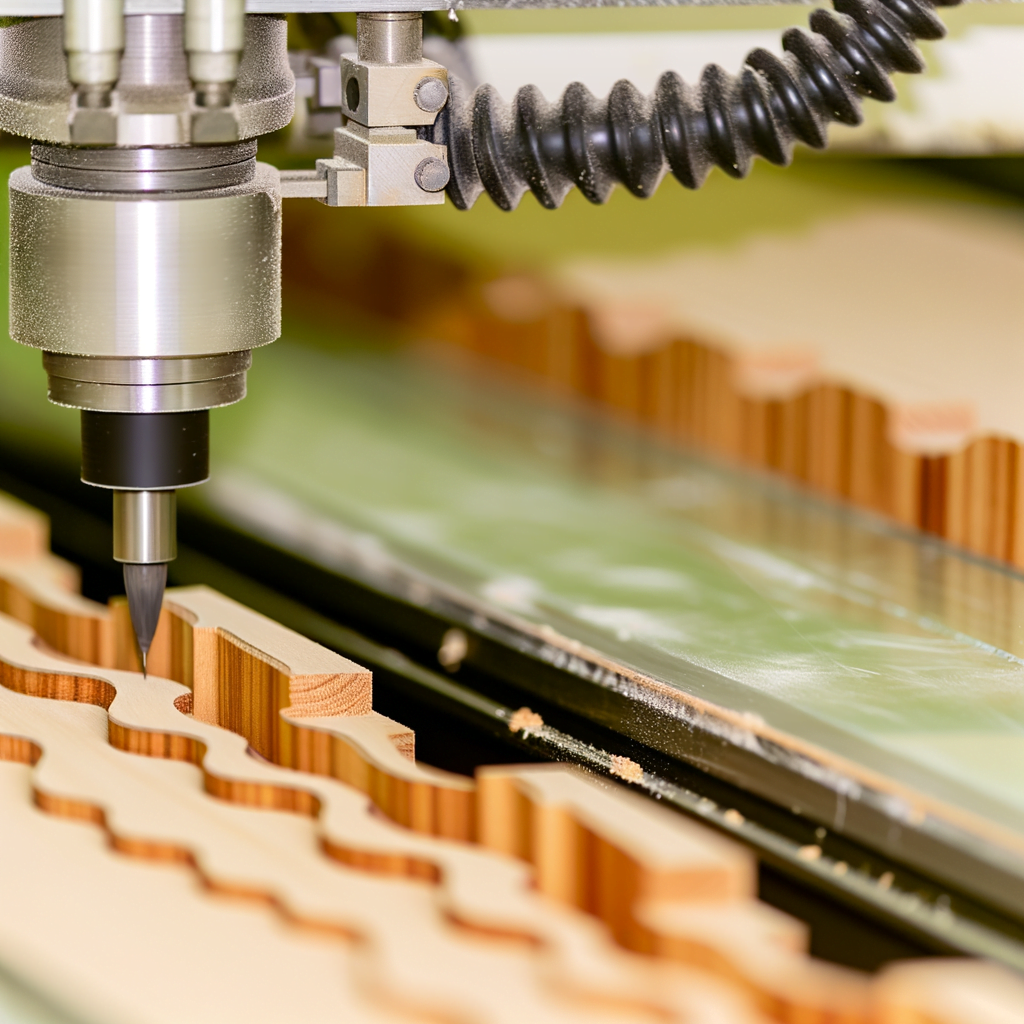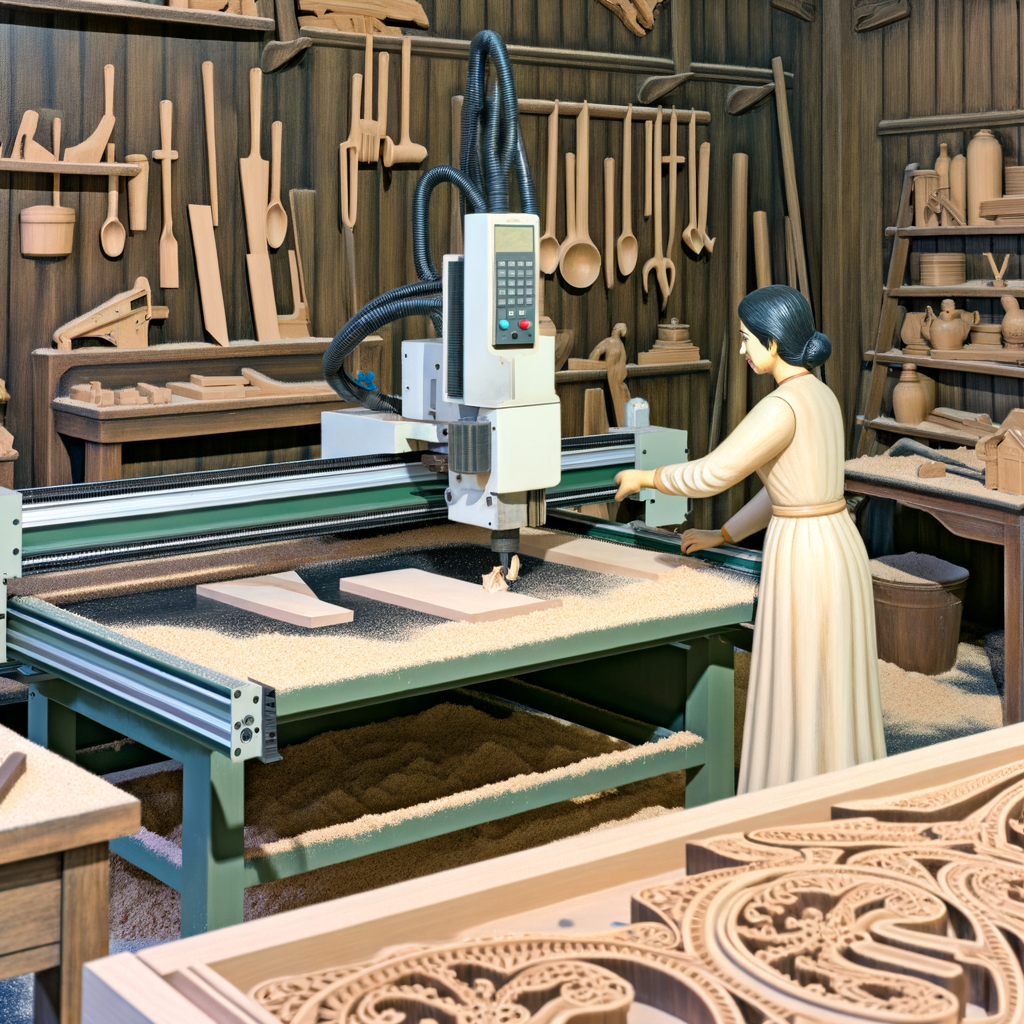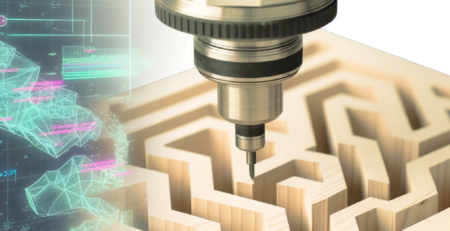Integrating CNC Routing into Your Woodworking Workflow
Sommario
- introduzione
- Maximizing Efficiency: Strategies for Incorporating CNC Routing into Traditional Woodworking
- The Fusion of Craftsmanship and Technology: Blending CNC Routing with Hand Finishing Techniques
- Streamlining Production: How to Seamlessly Integrate CNC Routing into Small-Scale Woodworking Operations
- Conclusione
“Unleash Precision and Efficiency: Elevate Your Woodworking with CNC Routing Integration.”
introduzione
Integrating CNC routing into your woodworking workflow can significantly enhance the precision, efficiency, and complexity of your projects. CNC (Computer Numerical Control) routers are advanced machines that use computer programming to control the cutting and shaping of materials such as wood, composites, aluminum, plastics, and foams. By adopting CNC technology, woodworkers can execute intricate designs that would be difficult or impossible to achieve with traditional hand tools or manual machinery. The integration process involves planning, understanding the capabilities of the CNC router, designing or obtaining digital models, setting up the machine, and executing the cuts. This technology not only accelerates production times but also opens up new possibilities for customization and scalability in woodworking.
Maximizing Efficiency: Strategies for Incorporating CNC Routing into Traditional Woodworking
Integrating CNC Routing into Your Woodworking Workflow
In the realm of woodworking, the advent of CNC (Computer Numerical Control) routing has revolutionized the way artisans and manufacturers approach the craft. CNC routers bring precision, efficiency, and repeatability to processes that were once solely reliant on the meticulous handiwork of skilled craftsmen. As such, incorporating CNC routing into traditional woodworking workflows can significantly enhance productivity and expand creative possibilities. However, to maximize efficiency, it is crucial to adopt strategies that seamlessly blend the old with the new.
The first step in integrating CNC routing into your woodworking workflow is to understand the capabilities and limitations of the technology. CNC routers excel at cutting complex shapes, engraving intricate patterns, and producing multiple identical components. They can work with a variety of materials, including different types of wood, plastics, and soft metals, making them versatile tools in a woodworker’s arsenal. However, they cannot replicate the nuanced touches and finishes that a handcrafted piece might exhibit. Therefore, identifying which parts of a project can be expedited by CNC routing and which should be left to traditional methods is essential.
Once you have a clear understanding of what CNC routing can do for your workflow, the next step is to integrate the technology without disrupting the existing processes. This involves careful planning and design. Modern software allows for the creation of detailed digital models that CNC machines can interpret and execute with precision. By designing parts that are to be CNC-routed in advance, you can ensure that they fit perfectly with the components crafted by hand. This digital-to-physical transition is a critical juncture where attention to detail can make or break the efficiency of the integration.
Another strategy is to use CNC routing for creating templates and jigs that can be used in traditional woodworking. This approach leverages the precision of CNC machines to enhance the accuracy and speed of manual operations. For instance, a CNC-cut template can guide a hand-held router to achieve consistent results when replicating a pattern or shape. This synergy between CNC technology and hand tools can lead to a significant boost in productivity while maintaining the quality and character of hand-finished pieces.
Training and skill development are also vital components of integrating CNC routing into your workflow. Woodworkers must become proficient with the software and understand the operation of the CNC router. This learning curve can be steep, but investing in training will pay dividends in the long run as workers become more adept at leveraging the technology to its fullest potential.
Finally, it is important to consider the impact of CNC routing on the overall workflow. The introduction of any new technology can disrupt established routines and require adjustments in scheduling and resource allocation. To minimize these disruptions, it is advisable to implement CNC routing gradually, starting with simpler projects and progressively taking on more complex tasks as confidence and expertise grow.
In conclusion, integrating CNC routing into a traditional woodworking workflow offers a path to increased efficiency and expanded capabilities. By understanding the technology, planning meticulously, using CNC-created aids, investing in training, and carefully managing the transition, woodworkers can harness the power of CNC routing without sacrificing the artistry and craftsmanship that define the trade. As the industry continues to evolve, those who adeptly combine the precision of modern machinery with the skill of traditional techniques will find themselves at the forefront of innovation and productivity in woodworking.
The Fusion of Craftsmanship and Technology: Blending CNC Routing with Hand Finishing Techniques

Integrating CNC Routing into Your Woodworking Workflow
The Fusion of Craftsmanship and Technology: Blending CNC Routing with Hand Finishing Techniques
In the realm of woodworking, the integration of CNC routing represents a harmonious blend of modern technology with traditional craftsmanship. This fusion not only enhances efficiency and precision but also elevates the quality of the final product. As artisans and manufacturers seek to optimize their workflow, understanding how to seamlessly incorporate CNC routing while preserving the integrity of hand finishing techniques becomes paramount.
CNC, or Computer Numerical Control, routing is a process where a computer-controlled cutting machine carves, shapes, and cuts wood based on a set of digital instructions. This technology has revolutionized the woodworking industry by enabling the production of complex designs that would be exceedingly difficult, if not impossible, to achieve by hand. Moreover, CNC routers can replicate these intricate patterns consistently and at a pace unattainable through manual methods.
However, despite the precision and speed of CNC machines, the value of hand finishing remains undisputed. Hand finishing techniques, honed over centuries, imbue wooden pieces with a unique warmth and character that machines alone cannot replicate. The tactile experience of sanding, the nuanced application of stains and finishes, and the meticulous attention to detail during assembly and adjustment are all aspects of the woodworking process that are best served by the human touch.
To effectively integrate CNC routing into your woodworking workflow, it is essential to recognize the strengths and limitations of both machine and manual methods. Begin by identifying the stages of production that benefit most from automation. For instance, tasks that require uniformity and precision, such as cutting multiple identical components or engraving detailed patterns, are ideal for CNC routing. By delegating these tasks to the CNC router, you not only save time but also reduce the margin for error inherent in manual processes.
Conversely, consider the aspects of your project that demand a personal touch. Final assembly, sanding, and finishing are stages where craftsmanship shines. The subtle variations and decisions made by an experienced woodworker during these processes can significantly enhance the aesthetic and tactile qualities of the piece. Therefore, it is crucial to maintain a balance between the efficiency of CNC routing and the artistry of hand finishing.
Transitioning between CNC machining and hand finishing requires careful planning. Ensure that the digital design accommodates manual intervention by leaving appropriate margins for sanding or additional shaping. It is also important to select the right tools and materials that complement both CNC and hand finishing techniques. For example, choosing the correct type of wood that machines well and also takes to hand-applied finishes can make a significant difference in the final outcome.
In conclusion, the integration of CNC routing into your woodworking workflow is not about replacing traditional skills but rather about enhancing them. By leveraging the precision and repeatability of CNC machines for certain tasks, woodworkers can focus their expertise on the finishing touches that bring out the soul of the wood. This strategic approach to blending technology with craftsmanship ensures that the final product reflects the best of both worlds, offering a testament to the enduring synergy between man and machine in the pursuit of woodworking excellence.
Streamlining Production: How to Seamlessly Integrate CNC Routing into Small-Scale Woodworking Operations
Integrating CNC Routing into Your Woodworking Workflow
In the realm of small-scale woodworking operations, the integration of CNC routing technology stands as a transformative step towards streamlining production. This sophisticated machinery, once the exclusive domain of large-scale manufacturers, is now increasingly accessible to workshops of all sizes. By embracing CNC routing, artisans and small business owners can unlock new levels of precision, efficiency, and creativity in their craft.
The journey to seamlessly integrate CNC routing into an existing workflow begins with understanding the capabilities of the technology. CNC, which stands for Computer Numerical Control, routers are controlled by digital designs and computer programming, allowing for intricate cuts, carvings, and engravings that would be time-consuming and difficult to achieve by hand. The precision of CNC machines ensures consistent quality across multiple pieces, a crucial factor for businesses looking to scale up production without sacrificing craftsmanship.
Transitioning to CNC routing requires careful planning. Initially, one must consider the space required for the machine, as well as the power supply and dust collection systems. It’s essential to allocate a dedicated area in the workshop that can accommodate the size of the CNC router and its operational needs. Furthermore, investing in proper ventilation and dust extraction will not only maintain a clean work environment but also prolong the life of the machine and ensure the safety of operators.
Training is another critical component of integrating CNC technology. Operators must be adept at both the software used to design the digital models and the hardware that carries out the physical production. Fortunately, many CNC router manufacturers offer comprehensive training programs, and a plethora of online resources and communities exist to support newcomers to the field. Mastery of these tools empowers woodworkers to translate their visions into tangible products with unprecedented speed and accuracy.
The software aspect of CNC routing should not be underestimated. Selecting the right design software is pivotal, as it must align with the specific needs and capabilities of the woodworking operation. Compatibility with the CNC router, ease of use, and the ability to handle complex designs are all factors to consider when choosing software. Once the appropriate software is in place, the design process becomes significantly more streamlined, allowing for quick adjustments and iterations that would be impractical with traditional methods.
Adopting CNC routing also opens the door to new materials and techniques. The versatility of CNC machines enables woodworkers to experiment with a variety of materials, including hardwoods, softwoods, plastics, and composites. This versatility can lead to product diversification and the ability to cater to a broader market. Additionally, the precision of CNC routing allows for the incorporation of advanced joinery techniques and intricate patterns that can set a product apart in a crowded marketplace.
Finally, integrating CNC routing into a woodworking workflow is not just about improving production; it’s about embracing a new mindset. The transition encourages a forward-thinking approach, where innovation and technology complement traditional skills. It encourages woodworkers to push the boundaries of their craft, explore new design possibilities, and ultimately, deliver superior products to their customers.
In conclusion, the seamless integration of CNC routing into small-scale woodworking operations is a multifaceted process that involves careful planning, training, and a willingness to adapt. By doing so, woodworkers can achieve a harmonious blend of artistry and automation, leading to a more efficient, creative, and profitable business. As the woodworking industry continues to evolve, those who harness the power of CNC technology will undoubtedly be at the forefront of this exciting transformation.
Conclusione
Integrating CNC routing into your woodworking workflow can significantly enhance productivity, precision, and repeatability. It allows for complex designs and patterns that would be difficult or impossible to achieve manually. CNC routing also reduces waste and the likelihood of human error, leading to more consistent and high-quality results. By adopting CNC technology, woodworkers can expand their capabilities, take on a wider range of projects, and improve overall efficiency in their operations.





Lascia un commento